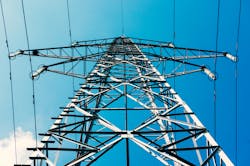How Electrical Professionals Can Educate Others on Electrical-Related Safety
According to Occupational Health and Safety Administration (OSHA) and Bureau of Labor Statistics (BLS) data collected from 2011 to 2019, most fatal electrical injuries occurred to individuals working in non-electrical occupations. During the NECA 2021 presentation called “Qualified vs. Unqualified: Who is Getting Hurt?,” President Brett Brenner and Program Manager Daniel Majano of the Electrical Safety Foundation International (ESFI) review BLS and OSHA fatal and nonfatal electrical injury data and why electrical professionals can and should play a key role in educating non-electrical professionals on the hazards of electrical work.
First, Majano explains the various sets of data about fatal and nonfatal electrical accidents. According to OSHA and BLS data, 68% of fatal electrical injuries between 2011 and 2019 occurred in non-electrical roles. Overall, he says the data suggests a fairly linear trend regarding fatal electrical injuries – while that means the issue of fatal injuries has not gotten worse, it also means it hasn’t improved.
Next, Majano discusses one of the most common causes of electrical-related deaths: overhead power line contact. He says that according to organization’s data analysis of OSHA and BLS reports, 83% of all overhead power line fatalities happened to non-electrical professionals such as construction workers, tree trimmers, truck drivers, painters, roofers, and more.
The fact that so many electrical injuries occur to non-electrical workers may surprise people, Brenner says, but that’s why electrical professionals can play such an important role in educating others on the dangers of electrical work and how to prevent injury and possibly death. “The electrical industry needs to help solve this problem,” he says. For example, that can include spreading information on what to do in the case of a downed power line or accidental contact with a live line, which his organization ESFI does.
Brenner also adds that he expects this problem to only increase. He suspects that the ongoing labor shortage in the electrical industry has led to a lack of safety training for electrical and non-electrical workers. With the rise of technologies such as electric vehicles and associated chargers, battery storage, photovoltaic/solar, etc., the need to educate everyone on electrical safety will be more important than ever. “We will need to think ahead,” Brenner concludes.
About the Author
Ellie Coggins Angus
Ellie Coggins Angus is the managing editor for EC&M and was formerly the associate editor for Electrical Wholesaling. She has more than five years of experience in the B2B publishing space covering the electrical contracting/wholesaling industry. Ellie received an MA in journalism from Syracuse University and a BA in English from University of Cincinnati. She is currently based in Cincinnati, Ohio. Connect with her at [email protected] or on LinkedIn.

